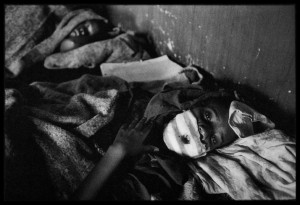-
What happened during the genocide was a tribal conflict
There are NO TRIBES in Rwanda. Tutsi and Hutu are socio-economic terms- Hutu being the working class and the Tutsi being the wealthier elites.
2. International community did not know until it was too late
Besides the 7 international human rights reports that were issued between 1990-1994, the ‘genocide fax’ sent by Romeo Dallaire to UN Headquarters on January 11, 1994 contained specific information provided by an informant. Approval to put down the threat never came.
3. Spontaneous rage over the shooting down of Rwandan President Habyarimana’s plane started the genocide. Hutu attacked Tutsi in retaliation.
There were various rumblings from Hutu Extremists against the President for agreeing to the Arusha Accords, which would have been signed had he not been murdered. Among Hutu and Tutsi, the killing of the president sent a fearful signal that the killing would start. The first victims of the genocide were Hutu Moderates (political opposition to Hutu Power).
4. 800,000 people died within 100 days
The killing took place at such a fast pace that getting an accurate number of those killed was not the priority, and yet many still claim 800,000 is ‘The’ number. Three weeks into the genocide, the Red Cross in Kigali estimated 250,000 had been killed. A week later, they said at least 500,000 had been killed. When BBC asked for numbers the following week, an overwrought Philippe Gaillard, head of the Red Cross’s delegation in Rwanda answered, “After half a million, sir, we stopped counting.”
5. Rape was a by-product during the genocide
Raping Tutsi women was part of the genocide- to brutally inflict suffering before killing them. If they lived, they experienced a social death within their community, or worse, bore the child of their attacker. ∞





